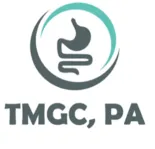What is Jaundice?
Jaundice is a yellow color in the skin, mucus membranes, or eyes. The yellow pigment is from bilirubin, a byproduct of old red blood cells. Jaundice is also a symptom of other disorders.
Considerations
If you’ve ever had a bruise, you may have noticed that the skin went through a series of color changes as it healed. When you saw yellow in the bruise, you were seeing bilirubin.
Normally, about 1% of our red blood cells retire every day, to be replaced by fresh red blood cells. The old ones are processed in the liver and disposed of. Much of the resulting bilirubin leaves the body in the stool.
If there are too many red blood cells retiring for the liver to handle, yellow pigment builds up in the body. When there is enough to be visible, jaundice results.
Jaundice can be caused by too many red blood cells retiring, by the liver being overloaded or damaged, or by the inability to move processed bilirubin from the liver through the biliary tract to the gut.
Most babies have some jaundice during the first week of life. The ordeal of birth can send many red blood cells to an early retirement (especially if a vacuum is used!), and babies’ livers are often unprepared for the load. Before mom’s milk comes in and stooling begins in earnest, bilirubin accumulates more easily. Jaundice is even more common in premature babies.
Physiologic jaundice is the name for normal jaundice commonly seen in healthy babies.
Pathologic jaundice is the name given when jaundice presents a health risk, either because of its degree or its cause. Pathologic jaundice can occur in children or adults. It arises for many reasons, including blood incompatibilities, blood diseases, genetic syndromes, hepatitis, cirrhosis, bile duct blockage, other liver diseases, infections, or medications. The term also applies to physiologic jaundice exaggerated by dehydration, prematurity, difficult delivery, or other reason.
Another condition called Gilbert syndrome is a benign, hereditary condition in which mild jaundice develops. It is caused by low levels of some bilirubin-processing enzymes in the liver. This condition, once recognized, requires no further treatment or evaluation. There are other more rare hereditary causes of elevated bilirubin levels.
A yellow-to-orange color may be imparted to the skin by consuming too much beta carotene, the orange pigment seen in carrots. In this condition, the whites of the eyes remain white, while people with true jaundice often have a yellowish tinge to the eyes.
This condition is called hypercarotenemia or just carotenemia.
Causes
Causes in Children Include:
- Autoimmune hepatitis
- Biliary atresia
- Breastfeeding jaundice
- Breast milk jaundice
- Disorders present since birth that cause problems processing bilirubin (Gilbert syndrome, DubinJohnson syndrome, Rotor syndrome, or Crigler-Najjar syndrome)
- Hemolytic anemia
- Malaria
- Newborn jaundice (physiologic jaundice)
- Viral hepatitis (hepatitis A, hepatitis B, hepatitis C, hepatitis D, and hepatitis E)
Breastfeeding jaundice may occur in the first week of life in more than 1 in 10 breastfed infants. The cause is thought to be inadequate milk intake, leading to dehydration or low caloric intake. It is a type of physiologic or exaggerated physiologic jaundice.
Breast milk jaundice is far less common and occurs in about 1 in 200 babies. Here the jaundice isn’t usually visible until the baby is a week old. It often reaches its peak during the second or third week.
Breast milk jaundice can be caused by substances in mom's milk that decrease the infant’s liver’s ability to deal with bilirubin. Breast milk jaundice rarely causes any problems, whether it is treated or not. It is usually not a reason to stop nursing.
Causes in adults include:
- Alcoholic liver disease (alcoholic cirrhosis)
- Autoimmune hepatitis
- Biliary stricture
- Blocked bile ducts (by infection, tumor or gallstones)
- Cancer of the pancreas
- Chronic active hepatitis
- Disorders present since birth that cause problems processing bilirubin (Gilbert syndrome, DubinJohnson syndrome, Rotor syndrome, or Crigler-Najjar syndrome)
- Drug-induced cholestasis
- Drug-induced hepatitis
- Hemolytic anemia
- Ischemic hepatocellular jaundice (jaundice caused by not enough oxygen or blood to the liver)
- Intrahepatic cholestasis of pregnancy (bile pools in the gallbladder because of the pressure in the abdomen with pregnancy)
- Malaria
- Primary biliary cirrhosis
- Viral hepatitis (hepatitis A, hepatitis B, hepatitis C, hepatitis D, and hepatitis E)
IMPORTANT REMINDER:
The preceding information is intended only to provide general information and not as a definitive basis for diagnosis or treatment in any particular case. It is very important that you consult your doctor about your specific condition.

